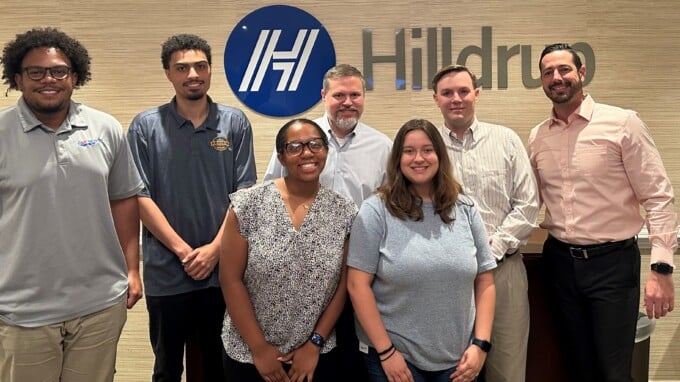Attract, Retain and Support Talent with Student Loan Repayment Benefits
Attracting the best talent in any industry isn’t easy. From entry-level positions to C-suite openings, your company needs to stand out to … Continued

Attracting the best talent in any industry isn’t easy. From entry-level positions to C-suite openings, your company needs to stand out to prospective employees who possess the skills that will help further your organization’s goals. Benefit offerings routinely are some of the most common and impactful ways to tip the scales in your favor when a candidate is evaluating multiple job offers. With this in mind, each year employers get more creative and competitive when revamping their benefits packages.
Gone are the days when a decent health insurance plan and a 401k would suffice. Today, investing in upskilling and educational offerings, flex-work benefits, mental and physical health support and even relocation packages are attractive perks.
The latest benefit trend, and a worthwhile investment, is student loan repayment assistance, given the burden and stress it can cause employees.
Student loan debt is at an all-time high
At a collective $1.6 trillion dollars owed, student loans are the second highest consumer debt category, just behind mortgage debt. What many may find surprising is that it’s not just younger employees who face student loan debt. All generations share this financial burden with Generation X holding the highest average in student loan debt followed by Boomers, according to Experian.
Attract, retain and improve productivity
With how much stress student loan debt can cause, benefits that help alleviate this burden are powerful retention tools. The Society for Human Resource Management (SHRM) reports that 86% of employees say they would commit to a company for five years if the employer helped repay student loans.
That’s not to say this is a benefit companies routinely offer. While many employees express an interest in student loan repayment benefits, the same SHRM report notes that only 4% of U.S. companies offer this benefit.
Debt is a daunting burden for everyone. According to a survey from American Student Assistance (ASA), more than half of employees ages 22 – 33 worry about student debt, and nearly two-thirds (65%) have considered a second job to help pay for their loans. Research from the American Psychological Association (APA) also found that financial stress can cause memory lapses, increased adrenaline and chronic stress, all of which can severely affect productivity.
Student loan repayment programs won’t entirely pay off employees’ debt, but they do offer a helpful boost that makes employees feel supported and valued, which has shown to improve their productivity by 50%, according to NBC News.
Tips for getting started
Find the right student loan forgiveness program
A student loan forgiveness program can be flexible and tailored to fit your company’s needs. Typically, student loan repayment plans are handled by a third-party vendor, which allows employers to make monthly contributions directly to an employee’s student loan servicer, eliminating employees serving as a middleman to designate funds toward their loan.
Whether you want to make a monthly contribution, employer match or offer student loan repayment assistance in lieu of 401k or other benefits, there are several third-party platforms that can complement your efforts. Be sure to understand the costs of partnering with a student loan forgiveness program and choose what’s best for your company. For example, many vendors that offer their services for free can be misleading. According to The Benefit Company, vendors who do not charge for their services are most likely a bank providing refinancing, or a third party receiving a referral fee and/or a percentage of the interest or refinance fees. These vendors will push refinancing as the best solution to student loan debt, rather than providing the best advice. Vendors who charge a fee are more likely to support your efforts rather than push refinancing as an option.
Vendors like Gradifi or Vault specialize in student loan repayment support as a benefits package with experts who can offer guidance on what will truly benefit your company and employees. Many of their services also extend beyond the repayment plans, providing tools and educational resources to further support employee’s financial health, as well as working with HR to use this benefit to attract talent.
Start small, test and build
A common starting point for employers implementing student loan repayment benefits is anywhere from a $50 to $100 monthly match per employee. For the first year, start small and see who participates, and revisit your plan each year to make sure offerings and the process works best for your company and employees.
Hold employees responsible
Consider offering this student loan benefit as a match, and not something your employees can rely on without making payments themselves. It’s also helpful for them to set up auto-pay as that eliminates the need for employees to remember to make their payment each month.
David Aronson, CEO of Peanut Butter, which helps employers offer student loan assistance as a benefit, also suggests having employees set up payments through a direct deposit with their bank, as many loan servicers offer a .25% interest-rate discount to those who do so.
Get support while supporting employees
More than ever, it’s a great time to start evaluating a student loan repayment program. Section 2206 of the recently passed Coronavirus Aid Relief and Economic Security (CARES) Act focuses specifically on student loan relief. It allows employers to make payments up to $5,250 toward employees’ student loans tax-free through the end of 2020.
***
The best employee benefit packages are those that meet the needs of their employees. With so many U.S. workers facing student debt, which can have a significant impact on their mental health and productivity, employers should evaluate this benefit to see if it could be a way to not only retain and help existing employees, but also attract new ones.
If you need help identifying the right benefits for your business, we’d love to help!


